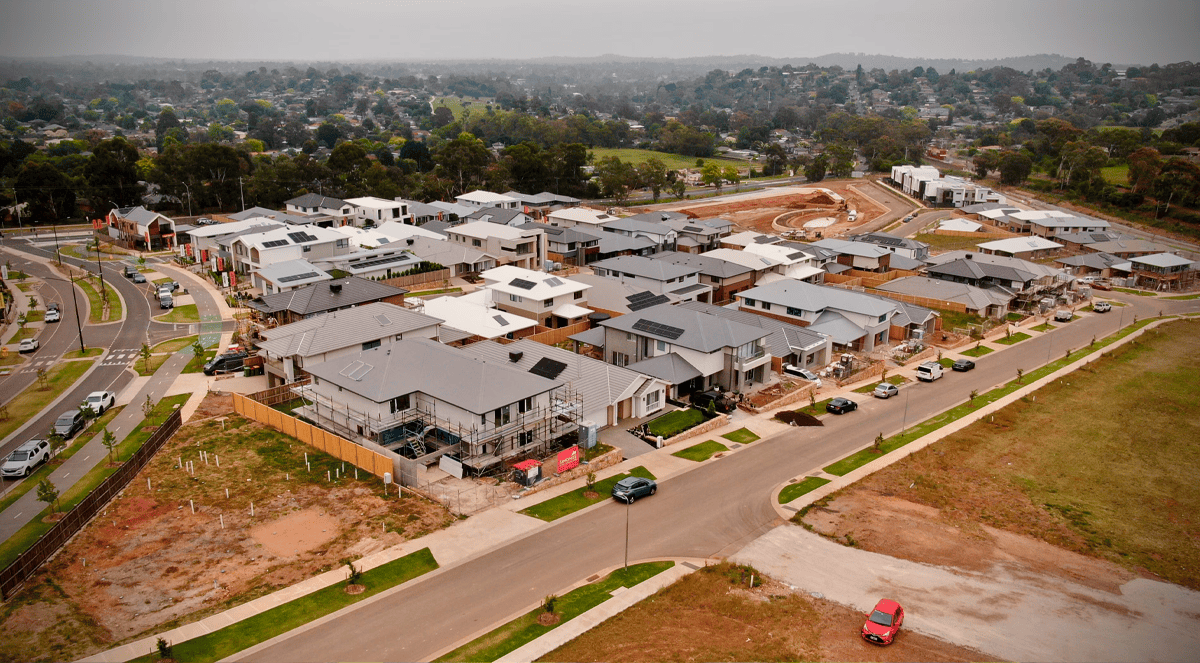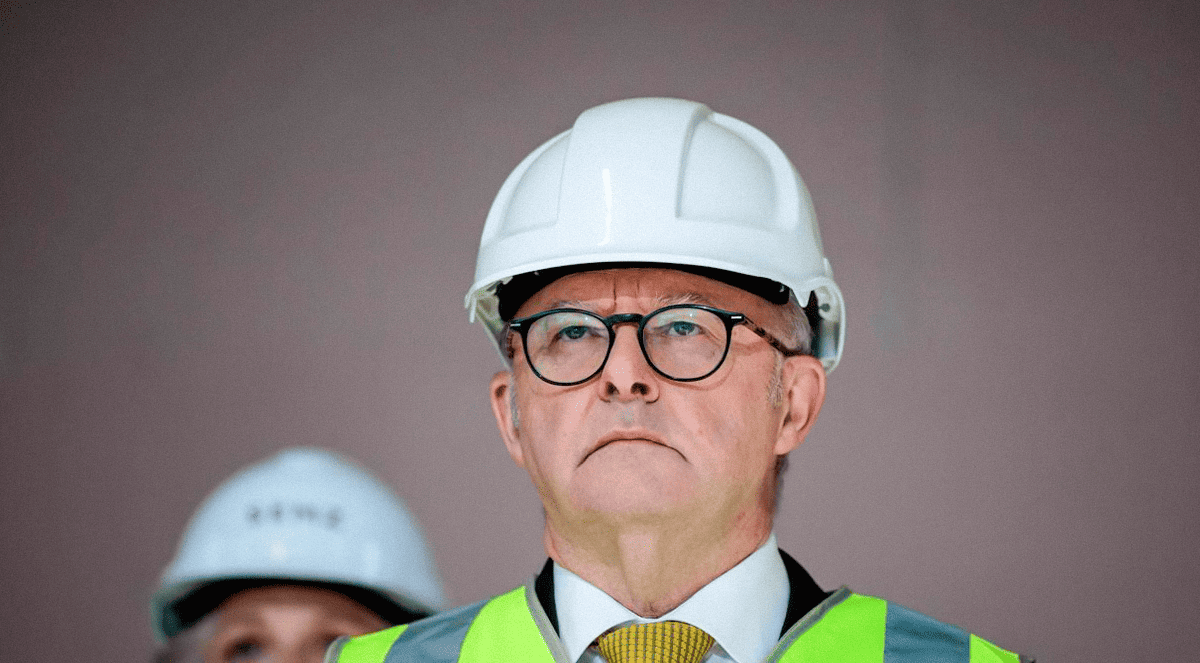.png)
KEY POINTS
- The Reserve Bank of Australia has kept the official cash rate on hold at 4.1% at its April meeting
- However, the central bank’s more “neutral” language leaves the door open for a possible rate cut as early as next month
- February’s rate cut has already boosted home price growth, increased borrowing capacity and improved consumer sentiment, particularly in the property market
As widely expected, the Reserve Bank of Australia has decided to keep the official cash rate on hold at 4.1% at its April monetary policy meeting.
While the decision is likely to disappoint homeowners looking for more mortgage interest relief after February’s 0.25% easing, the more “neutral” language in the statement accompanying the decision and from RBA Governor Michele Bullock herself keeps open the possibility of another interest rate cut as early as next month.
In recognition of the uncertainties caused by the Trump administration’s tariff policies, the RBA has also indicated it’s well placed to help cushion the impact of some of the economic chaos unleashed by the United States.
The details
The Reserve Bank of Australia’s interest-rate setting board has adopted a wait-and-see approach at its first ever meeting, electing to keep the cash rate on hold at 4.1%.
It’s the first decision taken by the bank’s new monetary policy committee, which has been split from the board overseeing the RBA’s operations and governance.
In a media release accompanying the decision, the central bank says, “recent information suggests that underlying inflation continues to ease in line with the most recent forecasts published in the (RBA’s own) February Statement on Monetary Policy.”
“Nevertheless, the Board needs to be confident that this progress will continue so that inflation returns to the midpoint of the target band (2-3% inflation) on a sustainable basis,” it says.
This is code for saying it will wait for more complete quarterly inflation data before deciding whether to cut rates again.
In a press conference, Governor Michele Bullock also confirmed that a rate cut had not been explicitly discussed during the rate-setting meeting.
However, with the next official quarterly inflation numbers due on the 30th of April, AMP Deputy Chief Economist Diana Mousina thinks the RBA will probably be in a position to lower rates at its May meeting.
“I think that should be enough for us to get a May rate cut,” she says.
“Our base case at AMP is that we're going to get another two cuts (this year) from here.
“So, one 0.25% cut in May and then another one in August,” Ms Mousina says.
There was also a noticeable shift in tone from the RBA Governor Michele Bullock at her regular post-meeting press conference, adopting a much less “hawkish” tone than in February, when she had publicly castigated money market traders for being "too confident" in their expectations of further rate cuts.
“We've come a long way, and it hasn't been easy,” Ms Bullock said, “but we have made good progress on bringing inflation down and keeping unemployment low.
“This is a good position for the economy to be in as we approach a period of uncertainty.
“But we have to be careful not to get ahead of ourselves.
“Inflation pressures remain, and cost-of-living pressures are still very real for many Australians.”
Ms Bullock also made it clear the central bank has been making concerted efforts to try to predict the effects of any fallout for Australia from the trade war unleashed by US President Donald Trump.
While the RBA statement noted that a global tariff battle could see inflation “move in either direction,” it noted that “monetary policy is well placed to respond to international developments if they were to have material implications for Australian activity and inflation.”
In other words, the RBA would be prepared to cut rates more quickly if it thought there could be negative implications for Australia, particularly job losses.
Financial markets
The decision to leave the cash rate on hold was widely expected by most economists and financial markets.
However, the tone and language of the RBA’s post-meeting statement and Governor Michele Bullock’s press conference appear to have done little to dent money market expectations, with around three quarters of traders still pricing in a 0.25% rate cut by the central bank in May.
Political points
Coming in the midst of a Federal election campaign, the Treasurer Jim Chalmers was quick to point out that nobody had been expecting the RBA to cut rates at its April meeting.
However, he was quick to try to take credit for the lower inflation environment today than when Labor beat the Coalition to claim government three years ago.
“The fact that interest rates have started to come down is a reflection of that,” he said.
Implications for the property market
Tim Lawless, the Research Director at CoreLogic, says that although rates have been kept on hold in April as expected, the RBA’s “February rate cut has already influenced housing markets, sending home values 0.3% higher in February before rising 0.4% in March.
“In financial terms, the 25-basis point cut in February was relatively mild: mortgage repayments on a $500k variable rate loan reduced by around $81/month,” he says.
“The bigger influence can be seen in consumer sentiment.
“When consumers feel more confident about the domestic economy and their household finances, they are more prepared to make high-commitment decisions such as buying or selling a home,” Mr Lawless says.
REA Group Senior Economist Eleanor Creagh agrees.
“Housing market conditions have firmed since February’s rate cut,” she says.
“Buyer sentiment has improved, borrowing capacities have increased, and price growth has resumed.”
Stay Up to Date
with the Latest Australian Property News, Insights & Education.




.png?width=292&height=292&name=Copy%20Link%20(1).png)
 SIGN UP FOR FREE NEWSLETTER
SIGN UP FOR FREE NEWSLETTER





.jpg?width=1920&height=1080&name=Warning%2c%20You%20Might%20Be%20Facing%20Higher%20Taxes%20Soon%20(1).jpg)





.png?width=1920&height=1080&name=Rate%20Drops%20Signal%20BIGGEST%20Property%20Boom%20in%20DECADES%20(1).png)

.jpg?width=1920&height=1080&name=Labor%20vs%20Liberal%20These%20Housing%20Policies%20Could%20Change%20the%20Property%20Market%20Forever%20(1).jpg)
.jpg?width=1920&height=1080&name=QLD%20Slashes%20Stamp%20Duty%20Big%20News%20for%20Investors%20%26%20Home%20Buyers%20(1).jpg)
.jpg?width=1920&height=1080&name=Trump%20Just%20Slapped%20Tariffs%20%E2%80%93%20Here%E2%80%99s%20What%20It%20Means%20for%20Australia%20(1).jpg)
.jpg?width=1920&height=1080&name=Federal%20Budget%202025%20More%20Debt%2c%20No%20Housing%20%E2%80%93%20Here%E2%80%99s%20What%20You%20Need%20to%20Know%20(1).jpg)
.jpg?width=1920&height=1080&name=Australias%20Housing%20Crisis%20is%20about%20to%20get%20MUCH%20Worse%20(New%20Data%20Warns).jpg)
%20(1).jpg?width=1920&height=1080&name=Australias%20RENTAL%20CRISIS%20Hits%20ROCK%20BOTTOM!%20(2025%20Update)%20(1).jpg)
%20(1).png?width=1920&height=1080&name=Is%20Adelaide%20Still%20a%20Good%20Property%20Investment%20(2025%20UPDATE)%20(1).png)
.jpg?width=1920&height=1080&name=RBA%20Shocks%20with%20Rate%20Cuts!%20What%E2%80%99s%20Next%20for%20Property%20Investors%20(1).jpg)
%20(1).jpg?width=1920&height=1080&name=I%20Predict%20The%20Feb%20Rate%20Cut%20(My%20Price%20Growth%20Prediction)%20(1).jpg)
.png?width=1920&height=1080&name=Why%20Property%20Prices%20Will%20Rise%20in%202025%20Market%20Predictions%20(1).png)
.jpg?width=1920&height=1080&name=Why%20Investors%20Are%20Choosing%20Apartments%20Over%20Houses%202%20(1).jpg)
.jpg?width=1920&height=1080&name=Why%20Rate%20Cuts%20Will%20Trigger%20A%20Property%20Boom%20(1).jpg)
.jpg?width=1920&height=1080&name=Retire%20On%202Million%20With%20One%20Property%20(Using%20SMSF).jpg)
.jpg?width=1920&height=1080&name=4%20Reasons%20Why%20You%20Should%20Invest%20in%20Melbourne%20Now%20(1).jpg)
%20(1).jpg?width=1920&height=1080&name=Old%20Property%20vs%20New%20Property%20(Facts%20and%20Figures%20Revealed)%20(1).jpg)
%20(1).jpg?width=1920&height=1080&name=Will%20The%20New%20QLD%20Govt%20Create%20a%20Property%20Boom%20or%20Bust%20(My%20Prediction)%20(1).jpg)
%20Scott%20Kuru%20(1).jpg?width=1920&height=1080&name=Inflation%20Hits%20Three-Year%20Low%20(Will%20RBA%20Cut%20Rates%20Soon)%20Scott%20Kuru%20(1).jpg)
.jpg?width=1920&height=1080&name=How%20to%20Buy%20Investment%20Property%20Through%20SMSF_%20The%20Ultimate%20Guide%20(1).jpg)
.jpg?width=1920&height=1080&name=Victoria%20Slashes%20Stamp%20Duty%20Melbourne%20Set%20to%20Boom%20Scott%20Kuru%20(1).jpg)
.png?width=1571&height=861&name=Are%20Foreign%20Buyers%20Really%20Driving%20Up%20Australian%20Property%20Prices%20(1).png)
.jpg?width=1920&height=1080&name=The%20Single%20Factor%20That%20Predicts%20Property%20Growth%20Regions%20(1).jpg)
%20Scott%20Kuru%20(1).jpg?width=1920&height=1080&name=My%20Prediction%20On%20Rates%20%26%20Negative%20Gearing%20(Market%20Crash)%20Scott%20Kuru%20(1).jpg)

-1.png?width=1920&height=1080&name=Major%20Banks%20Cut%20Rates%20Will%20RBA%20Follow%20Suit%20(Sept%20Rate%20Update)-1.png)
%20Scott%20Kuru-1.png?width=1920&height=1080&name=Rate%20Cut%20Coming%20What%20New%20Zealands%20Move%20Means%20for%20Australia%20(Sept%20Prediction)%20Scott%20Kuru-1.png)
%20(1).jpg?width=1920&height=1080&name=Buy%20when%20the%20interest%20rates%20are%20high!%20(Why%20you%20must%20buy%20now!)%20(1).jpg)
.jpg?width=1920&height=1080&name=Carms_Revised%20Taxes%20Due%20Aug%209%20YT%20Thumbnail02%20(1).jpg)
.jpg?width=1920&height=1080&name=Carms_Too%20Little%20Too%20Late%20Aug%207%20YT%20Thumbnail01%20(1).jpg)









.jpg?width=1920&height=1080&name=Carms_Rate%20Drop%20In%20July%20Jun%2010%20YT%20Thumbnail02%20(1).jpg)
.jpg?width=1920&height=1080&name=Carms_Own%20a%20Property%20V6%20Jun%205_YT%20Thumbnail%20(1).jpg)









.png?width=1920&height=1080&name=Artboard%201%20(3).png)






.jpg?width=1920&height=1080&name=YT%20thumbnail%20%20(1).jpg)

